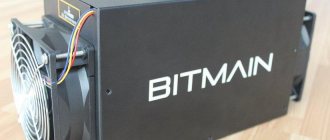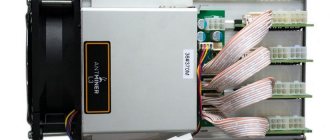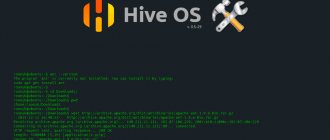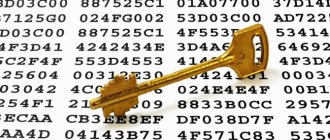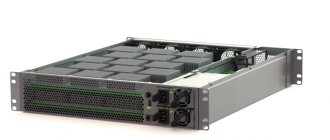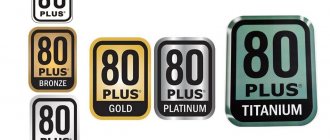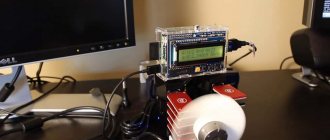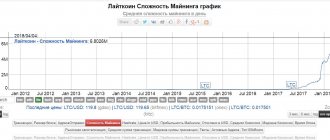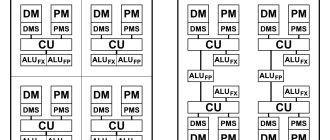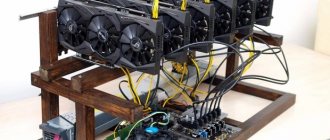Information about the material Published: 09/24/2015 10:43
In April of this year, BITMAIN began to periodically suspend sales of the popular ASIC miners AntMiner S5 . After which, rumors spread across the Internet that the company would soon release a new miner based on a completely new ASIC chip. Moreover, the BITMAIN company itself neither confirmed nor denied these rumors. This fact only fueled rumors about the release of a new chip and miner. By the end of summer 2020, many were already almost sure of the imminent appearance of a new product from BITMAIN. Just a month later, BITMAIN officially presented documentation for the new ASIC chip BM1385 .
The published documentation, oddly enough, fueled uncertainty about the appearance of a new chip, since the chip was promised back in July, and it was already August, but no new official information regarding the new chip or miner appeared. AntMiner S7 miner suddenly appeared on the manufacturer’s website , and within a few hours pre-sale was opened, with a promise to start shipping before September 21-30, 2020.
I was lucky and got one of the first production samples with serial number 00003 . And this ASIC is already in my hands.
Delivery of AntMiner S7:
I was surprised by the fact that the miner was not sent as some kind of prototype, but as a full-fledged standard lot. In addition, the manufacturer included documentation indicating the shipping cost in a separate outer package for the convenience of accompanying the cargo at customs. As a result, the ASIC passed through customs without any problems and was quickly delivered to me. Of course, perhaps I was just lucky and I do not guarantee successful delivery and customs clearance for other buyers.
First impressions of the purchase:
The EMS courier delivered me a rather modest-sized box weighing only 4 kg, which contained almost 5 Terahesh/s of power). This looked especially strange if we remember the huge and heavy miners, weighing 25 kg, just a year ago, which gave out 2 Terahash/s of Bitcoin mining capacity. Before opening the box, I was tormented by vague doubts: is there really an ASIC miner with a productivity of 5 Thesh/s? However, after the autopsy, all doubts were quickly dispelled.
In the box, in addition to the miner itself, there was also an accompanying document with a detailed description of the warranty conditions and detailed recommendations and technical specifications for current consumption, as well as the minimum power characteristics for power supplies. The packaging for transportation was much more modest than in older models, but this is justified by the fact that the ASIC is very compact and lightweight, due to the fact that the miner finally got rid of massive radiators.
After unpacking, it seemed to me that something was loose inside the miner. I thought that some kind of radiator or other part of the device had fallen off and decided to disassemble the miner (I have some experience in circuit design) before connecting it, in order to protect the miner when turned on for the first time. Having unscrewed two coolers, I still could not find the reasons for the looseness. However, I was soon able to find out that the whole point is in the new aluminum case, in which all the boards are not fixed with screws as usual, but are located in special slides inside the case, which have a little play (about 0.5mm). This gave the effect of something dangling.
BITMAIN has finally made a brand new excellent aluminum housing for their new products. In addition, on the miner body there are runners and recesses that are designed to connect several ASICs into a single block. This is a very simple and effective solution.
Profitability of Antminer S19 from Bitmain
As usual, profitability calculations for both ASIC models will be made using the WhatToMine service. We remind you that you can calculate the profitability of your video cards in mining using our 2CryptoCalc calculator.
So, we select our mining algorithm (SHA-256), enter the hashrate stated in the announcement, electricity consumption and set the cost per kilowatt-hour at 6 cents. At the current dollar exchange rate, this amount is approximately 4 rubles. The entered data is in the screenshot below.
Profitability calculation for Antminer S19. Source: WhatToMine
Click the Calculate button and get the profitability results for Antminer S19.
Profitability calculation for Antminer S19. Source: WhatToMine
On the day, S19 will bring you $9.13 after deducting electricity costs. In a month, assuming a constant Bitcoin exchange rate and a constant hashrate, you could earn $283.03. This is really a lot considering the current subsidence of the exchange rate.
UPD: we have updated this article to calculate the payback of ASIC.
Today - April 20 - the profitability of Bitcoin mining on Antminer S19 is just over $7.
Profitability of mining on Antminer S19
First launch of the BITMAIN AntMiner S7 miner:
In order to run the miner, I had to find a power supply with as many as 10!!!!! PCI-E connectors. 3 connectors for each of the three boards and 1 connector for the control board. First, I connected the most powerful power supply I have: Enermax Platimax 1500 - 1500W (which is positioned by the manufacturer as one of the best power supplies, has a Platinum and 90+ certificate and is praised on various forums), which failed to launch. After which I decided to connect the miner to the EVGA 1300 G2 power supply , which only has GOLD and 80+ statuses. I was surprised that it was the EVGA power supply that handled the miner perfectly and has been working without interruption for more than two days.
Technological features of ASIC S7
When first acquainted with the new product, users were pleasantly pleased with the design features of the case. It was made of aluminum, which solved several problems at once, from increasing heat transfer efficiency to the protection factor. In addition, the functionality of the body was added by a system of runners and hooks, with the help of which the “filling” was fixed. The boards were not screwed in, but inserted into the runners, which creates a slight backlash (approximately half a millimeter). Since upon receipt of the Antminer it is usually shaken at different angles to identify mechanical defects, some users felt as if some kind of fallen-off radiator was rolling around in the case. In fact, this is how the boards tapped in the guides.
The S7 ASIC also differed from previous versions of Antminer in its network connection features. More powerful controllers created new requirements for connecting PCIe ports. Each board required the use of three plugs at once. It was not recommended to connect different power supplies on the same board, just as it was not recommended to power the controller with a power supply at the beginning of the circuit.
Due to the large number of connectors, when connecting Antminer for the first time, users encountered technical difficulties: they had to look for a power supply with 10 PCIe connectors (3 for each board and 1 for powering the control board). In addition, the choice of power supply caused difficulties also because, in one of the illustrative examples, the S7 did not turn on with the Enermax Platimax 1500 (90+ready) power supply unit, but started working with the EVGA 1300 G2 power supply unit available at that time. GOLD certificate for 1300 W.
In the serial versions of this Antminer, 2 12038 fans were placed (1-fan models are less common), which, along with the design features of the chips and the case, are responsible for the cooling system. When measuring the average noise level, indicators were obtained at the level of 62-66 dB. They turned out to be higher than the noise indicators of their predecessors, but still the noise level remained comfortable enough even for installation in a separate room of the apartment, since the operation of the fans was devoid of squeaks and squeaks. In addition, with the release of S7, a speed control function appeared in the Antminer interface, which indirectly made it possible to independently regulate the noise level.
So, at 40 percent power (about 3120 rpm) at an actual ambient temperature of 25C, the temperature on the boards increases by approximately 10C, reaching a temperature of no more than 57C.
Software and interface:
I will not describe each tab and menu item separately here; they have probably already been familiar to those who are not new to BITMAIN products. However, I want to point out some interesting things that are present in the miner’s firmware. The general appearance of the interface has not changed much since the company's previous products. However, the manufacturer has added a new convenient function - controlling the cooler speed as a percentage of the maximum power. This very convenient function solves all possible problems with noise and all sorts of third-party solutions such as boosters and replacement of stock coolers. Standard coolers are very powerful and noisy, but you can set the fan speed to 80-60-50-45-40% of the maximum. At 40%, the fans produce 3120 rpm, and the temperature rises only 10 degrees from what you will see at 100% fan speed and is only 57 degrees Celsius. If the miner is installed in your living space, then this function will be a lifesaver for you. Regarding the possibility of overclocking, you can change the frequency of the chips from 100 to 1000 MHz, with a standard frequency of 600 MHz, in increments of 6.25 MHz.
Bitmain Antminer S5 and S7 – how was it?
At the end of 2014, the Chinese mining giant Bitmain released Antminer S5 with BM1384 chips, manufactured using a 28nm process technology for Bitcoin mining. Unlike its younger brother Antminer S3, the manufacturer decided not to install a case in the S5, thereby ensuring maximum ventilation.
Miners received the device rather coolly, since due to the lack of a housing it was unrealistically loud, voracious in terms of energy consumption, and in general was expensive.
In September 2020, Bitmain presented the Antminer S7 ASIC miner, legendary for the next few years. It has been fully developed: new BM1385 chips with a 28-nm process technology have been installed, an additional fan has been added, the noise level has been reduced, etc.
As it turned out in practice, the S7 had many more shortcomings than the S5. The body of the device is always cold, but the air outlet is always hot, which creates a certain discomfort in the living room. In addition, thanks to two fans, the noise level skyrocketed to an incredible 65 dB, which is comparable to people talking loudly!
Now let's look at the technical characteristics of each ASIC:
Antminer S5:
- Hash algorithm – SHA-256;
- Productivity – 1.155Th/s;
- Energy consumption – 590 W;
- Noise level – 60 dB;
- Operating temperature – up to 35 C;
Antminer S7:
- Hash algorithm – SHA-256;
- Productivity – 4.73Th/s;
- Energy consumption – 1293 W;
- Noise level – 65 dB;
- Operating temperature – up to 40 C;
In terms of performance and power consumption, the S7 definitely wins. Despite a lot of the above shortcomings, the S7 at that time was the most stable and reliable product on the market.
AntMiner S7 miner operation:
I didn't have much time to do a lot of measurements and experiment with overclocking. Moreover, the power supply with which the miner started worked at the limit of its capabilities, although without any problems or reboots. Energy consumption readings from an outlet with an 80+ power supply showed 1272-1289W. I think that server power supplies or a power supply from BITMAIN that meets its specifications are best suited AntMiner S7 As it turned out, the ASIC actually operates at the stated power of 4.86 Th/sec +\- 5%. During my testing, the miner body was always cold, and the air blown out of the device was always hot. The coolers showed a noise level of 84dBm at 100% power. During testing, the pool showed a hashrate from 2.9 to 7.92 Thesh/s, which approximately corresponds to the stated 4.86 Thesh/s.
In the next part of the review, I will completely disassemble the new ASIC, we will be able to look at its design from the inside and try to improve it somehow.
The article was prepared based on material from Bits.media
Go to the manufacturer's website BITMAIN
